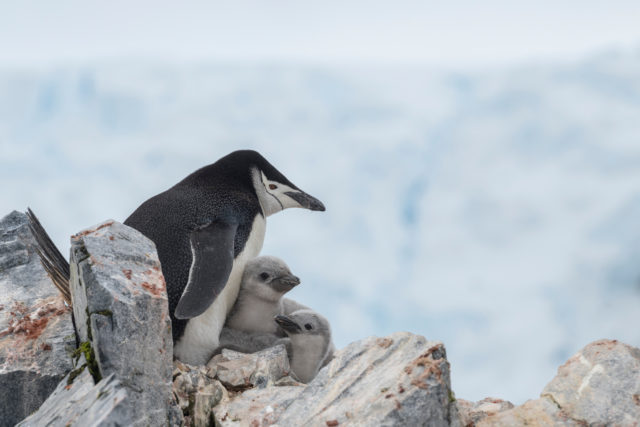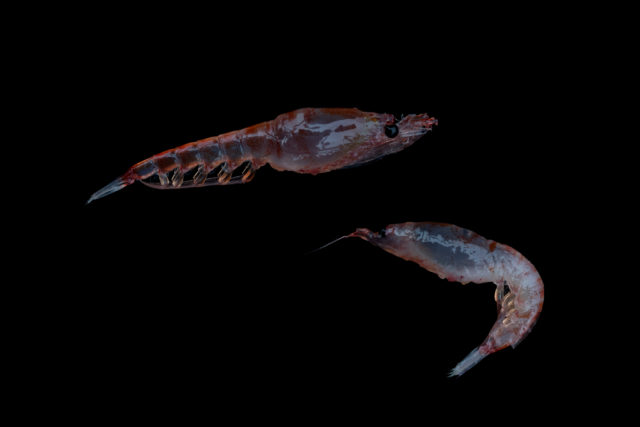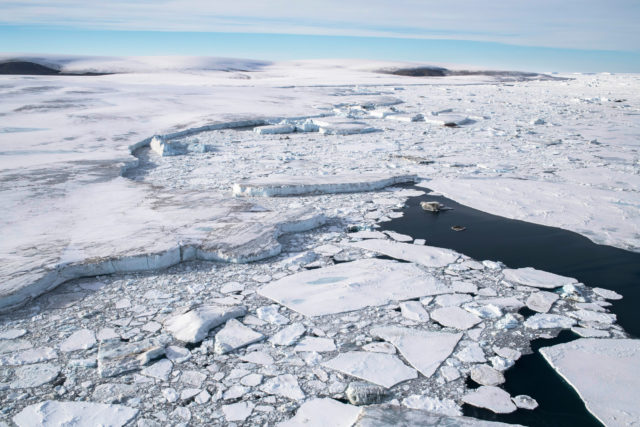
The krill-fishing industry is “waging a tug-of-war for food” with penguins, seals and whales in the already-vulnerable Antarctic region, campaigners said.
The tiny shrimp-like creatures are one of the most important in the Antarctic food web, being eaten by species ranging from blue whales to Adelie, emperor and king penguins, elephant and fur seals and albatrosses.
But tracking of ships targeting krill, which are caught for products such as Omega-3 tablets, fishmeal for fish farms and even pet food, has revealed vessels close to wildlife feeding grounds, Greenpeace warned.
 Chinstrap penguins are among the wildlife which feed on krill (Christina Aslund/Greenpeace/PA)
Chinstrap penguins are among the wildlife which feed on krill (Christina Aslund/Greenpeace/PA)
A new report from the environmental group said that, despite the fishery being presented as one of the best managed in the world, the data also suggests vessels are anchoring close to protected areas, which could damage wildlife and the fragile seafloor.
The tracking information suggests vessels were engaging in risky fishing practices such as transferring the catch from one ship to another at sea, which has been linked to poor environmental and labour protections.
And the report warned of potential environmental damage from fuel spills, fires on board and grounding of vessels in the pristine waters of the Antarctic.
Krill, like many Antarctic species, are already under threat from fast-rising temperatures due to climate change, which could destroy much of their habitat with knock-on effects for the region’s wider wildlife, the report said.
 Krill are a key part of the Antarctic food web (Christian Aslund/Greenpeace/PA)
Krill are a key part of the Antarctic food web (Christian Aslund/Greenpeace/PA)
Greenpeace is calling for all vessels krill fishing in the region to stay out of all Antarctic areas which are being proposed as marine sanctuaries, and for businesses which buy krill to avoid those that continue to fish in those places.
Countries that are members of the Commission for the Conservation of Antarctic Marine Living Resources (CCAMLR), which protects Antarctica, have put forward proposals for a number of areas to be protected.
These include the waters of the Weddell Sea, which has so far escaped the focus of the krill fisheries and if it secures protection would become the biggest marine reserve on Earth.
 Protection has been proposed for the pristine Weddell Sea (Daniel Beltra/Greenpeace/PA)
Protection has been proposed for the pristine Weddell Sea (Daniel Beltra/Greenpeace/PA)
The West Antarctic peninsula has also been proposed as a sanctuary, which would conserve Adelie penguins and killer whales and protect essential krill nurseries, while countries have failed to reach consensus on plans to protect East Antarctica.
Frida Bengtsson, of Greenpeace’s “protect the Antarctic” campaign, said vessels were fishing from the bottom of the food chain near the feeding grounds of whales, penguins and other animals.
“They’re waging a tug-of-war for food with animals in the region, in an area already struggling with change.
 Gentoo penguins also rely on krill for food (Daniel Beltra/Greenpeace/PA)
Gentoo penguins also rely on krill for food (Daniel Beltra/Greenpeace/PA)
“Climate change is impacting on krill numbers and Antarctic wildlife shouldn’t have to be directly competing for food with trawlers just so these companies can sell health pills on the other side of the world.
“If the krill industry wants to show it’s a responsible player, then it should be voluntarily getting out of any area which is being proposed as an ocean sanctuary, and should instead be backing the protection of these huge swathes of the Antarctic,” she urged.


Why are you making commenting on The Herald only available to subscribers?
It should have been a safe space for informed debate, somewhere for readers to discuss issues around the biggest stories of the day, but all too often the below the line comments on most websites have become bogged down by off-topic discussions and abuse.
heraldscotland.com is tackling this problem by allowing only subscribers to comment.
We are doing this to improve the experience for our loyal readers and we believe it will reduce the ability of trolls and troublemakers, who occasionally find their way onto our site, to abuse our journalists and readers. We also hope it will help the comments section fulfil its promise as a part of Scotland's conversation with itself.
We are lucky at The Herald. We are read by an informed, educated readership who can add their knowledge and insights to our stories.
That is invaluable.
We are making the subscriber-only change to support our valued readers, who tell us they don't want the site cluttered up with irrelevant comments, untruths and abuse.
In the past, the journalist’s job was to collect and distribute information to the audience. Technology means that readers can shape a discussion. We look forward to hearing from you on heraldscotland.com
Comments & Moderation
Readers’ comments: You are personally liable for the content of any comments you upload to this website, so please act responsibly. We do not pre-moderate or monitor readers’ comments appearing on our websites, but we do post-moderate in response to complaints we receive or otherwise when a potential problem comes to our attention. You can make a complaint by using the ‘report this post’ link . We may then apply our discretion under the user terms to amend or delete comments.
Post moderation is undertaken full-time 9am-6pm on weekdays, and on a part-time basis outwith those hours.
Read the rules here